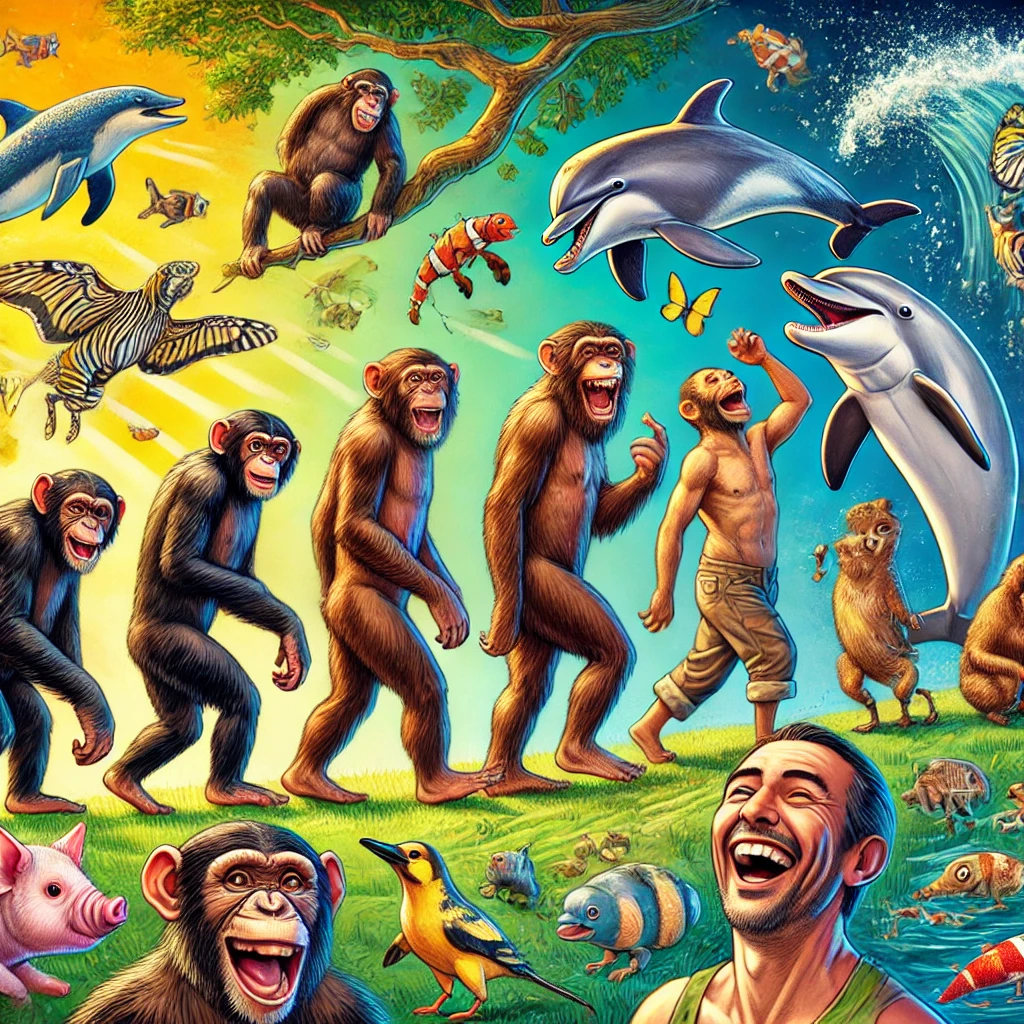
Laughter is a universal human experience, often associated with joy and social bonding. However, the phenomenon of laughter extends beyond humans, with various animal species exhibiting laughter-like behaviors. Understanding the evolution of laughter provides insights into its biological, psychological, and social functions.Wikipedia
The Origins of Laughter
Laughter likely originated as a modification of play vocalizations found in primates. In humans, laughter both upregulates the brain’s endorphin system and increases the sense of bonding between those who laugh together. This suggests that laughter evolved as a mechanism to enhance social cohesion among larger groups, especially as grooming became less practical for bonding in expanding communities.
Laughter in Non-Human Primates
Great apes, such as chimpanzees, gorillas, and orangutans, exhibit laughter-like vocalizations during physical interactions like wrestling, play chasing, or tickling. These vocalizations, while not identical to human laughter, share similar functions in promoting social bonding and play. The presence of such behaviors in both humans and great apes suggests a shared evolutionary origin of laughter, dating back at least 10 to 16 million years.
Laughter in Other Animal Species
Laughter-like behaviors are not confined to primates. Research has identified similar vocalizations in various species, indicating that laughter’s evolutionary roots are deep and widespread.
- Rats: Studies have shown that rats emit ultrasonic “chirps” during play and when tickled, which are considered analogous to human laughter. These vocalizations are associated with positive emotional states and social bonding among rats.
- Dogs: Canines produce a specific panting sound during play that resembles human laughter. This “laughter” has been found to promote social interactions and reduce stress among dogs.
- Dolphins: Bottlenose dolphins use distinct vocalizations during play to signal non-aggression and maintain social bonds. These sounds function similarly to human laughter in reinforcing social cohesion.
The Role of Laughter in Social Bonding
Laughter serves as a powerful tool for social bonding across species. In humans, it enhances group cohesion, facilitates communication, and strengthens relationships. Similarly, in animals, laughter-like vocalizations during play help establish and maintain social bonds, ensuring cooperative behaviors and group stability.
Conclusion
The evolution of laughter is a testament to its fundamental role in promoting social connections. From primates to rodents to marine mammals, laughter-like behaviors have emerged as vital mechanisms for communication and bonding.Recognizing the shared nature of laughter across species underscores its significance in the social fabric of animal communities.



